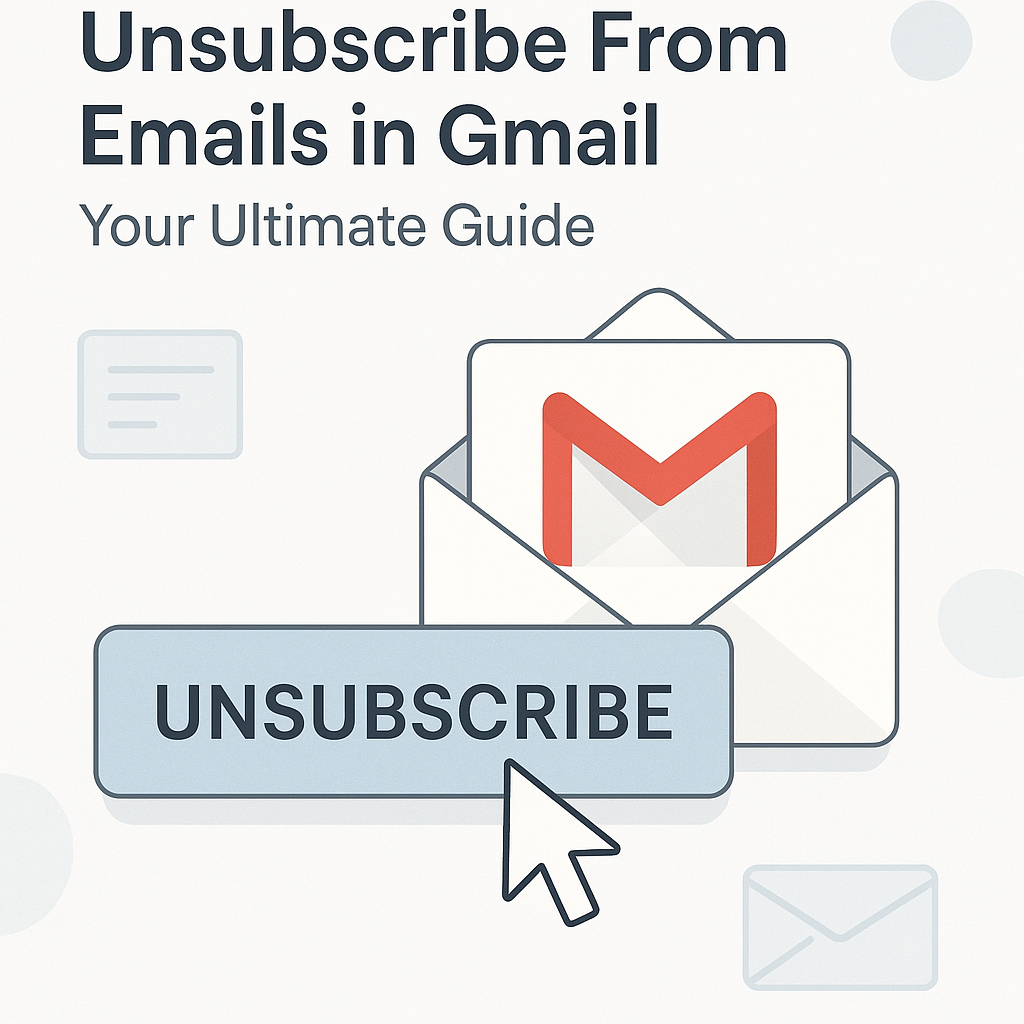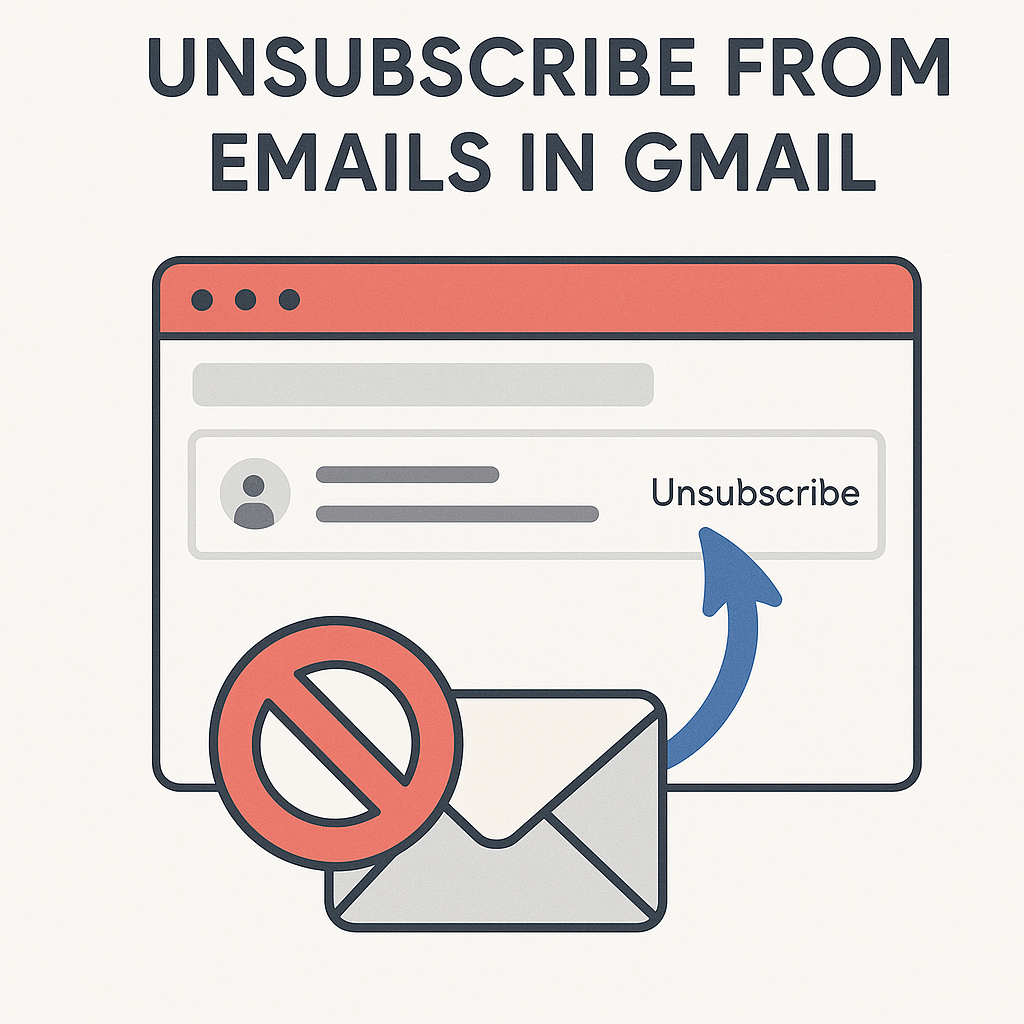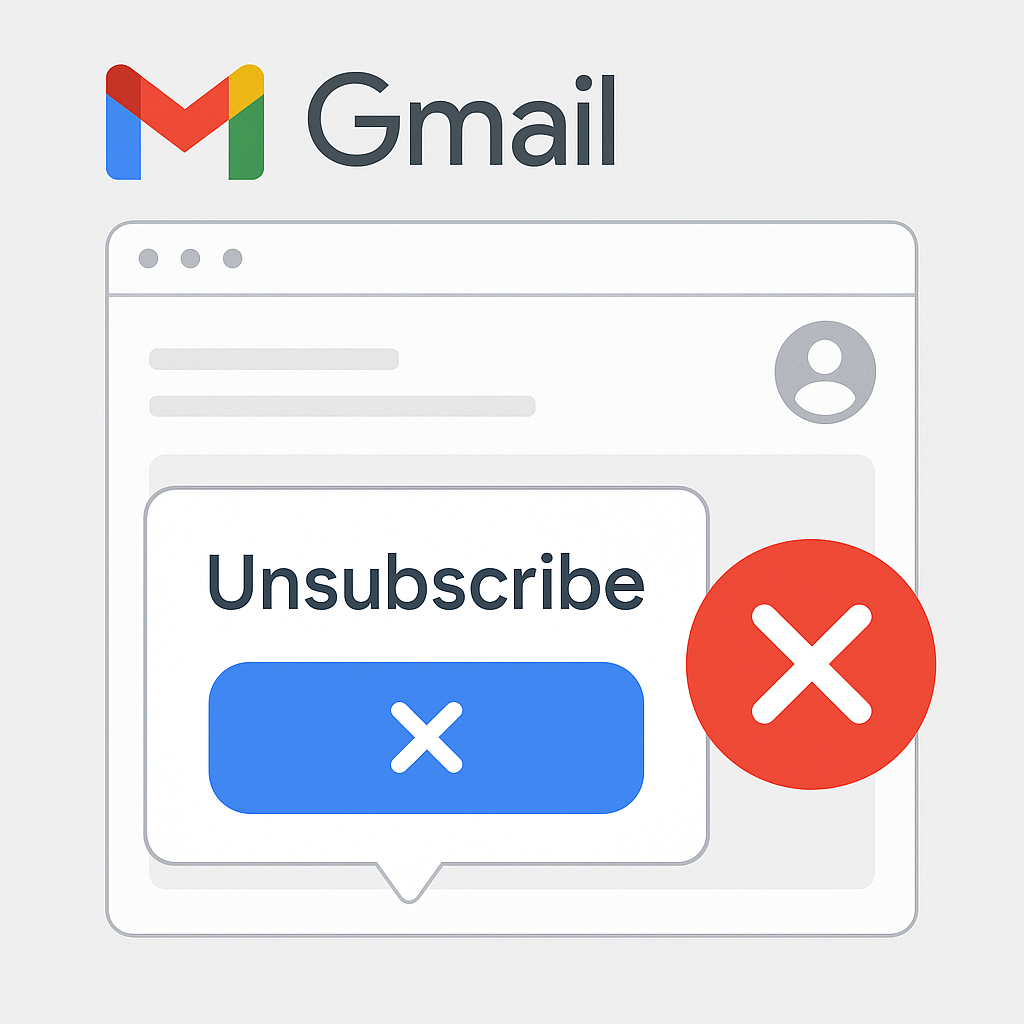Unsubscribe From Emails in Gmail: Your Ultimate Guide

Imagine this: You sit down at your desk, ready to tackle your workday, only to be met with a Gmail inbox that looks more like a digital battlefield. Notifications ping incessantly, promotional offers scream for attention, and newsletters you vaguely remember signing up for are piled high. This is the reality for many professionals, entrepreneurs, and teams today – a constant barrage of unwanted emails that not only distract but actively hinder productivity. If your inbox feels like a black hole of digital clutter, you're not alone. The sheer volume of email can be overwhelming, making it a significant challenge to find what truly matters. Effectively managing your subscriptions is no longer a luxury; it's a necessity for anyone aiming to reduce email overload and achieve a state of gmail inbox zero.
Introduction: The Problem of Email Overload in Gmail
In our hyper-connected world, email remains a primary communication channel. While indispensable, it has also become a significant source of digital distraction and inefficiency. For many, the daily task of sifting through, categorizing, and responding to emails consumes an inordinate amount of time. The culprit? A relentless influx of emails you no longer want or need. These can range from marketing campaigns and daily digests to notifications from services you signed up for months ago and have since forgotten. Each unwanted email is a tiny interruption, a drain on your focus, and a contributor to that dreaded feeling of being constantly behind.
This constant digital noise isn't just annoying; it has tangible consequences. It can lead to missed important messages, increased stress levels, and a significant dip in overall work quality. The mental energy required to navigate a cluttered inbox can be exhausting. According to various studies, professionals can spend hours each week just managing their email, time that could otherwise be dedicated to strategic thinking, client interaction, or core business tasks. The ability to stop unwanted emails gmail users receive is paramount to reclaiming this lost time and mental bandwidth.
The goal for many is a clean, manageable inbox – a place where important communications stand out, and distractions are minimized. This article is your comprehensive guide to mastering the art of the unsubscribe, focusing specifically on how to efficiently unsubscribe from emails in Gmail and introducing powerful solutions that can automate this critical process, transforming your email experience from a chore into a streamlined part of your productive workflow.
Why You Need to Unsubscribe From Unwanted Emails
The decision to actively manage email subscriptions is more than just tidying up; it's a strategic move towards greater efficiency and mental clarity. Unsubscribing from emails you no longer find valuable offers a multitude of benefits that ripple through your entire workday:
- Time Reclamation: Every minute spent deleting or ignoring unwanted emails is a minute not spent on revenue-generating or mission-critical tasks. Automating unsubscribes frees up this time significantly.
- Reduced Distractions: A cleaner inbox means fewer interruptions. When promotional emails and newsletters are removed, you're less likely to be pulled away from your current task by a tempting subject line or an urgent-sounding offer.
- Improved Focus: By minimizing the visual clutter and mental load associated with a crowded inbox, you can concentrate better on the emails that truly require your attention. This is a key component of achieving high levels of email productivity.
- Enhanced Decision-Making: When your inbox is well-organized and free from noise, it's easier to spot important trends, urgent requests, and strategic communications. This clarity can lead to better, more informed decisions.
- Lower Stress Levels: The feeling of being overwhelmed by email can be a significant stressor. Taking control of your subscriptions is a powerful way to reduce this anxiety and regain a sense of command over your digital environment.
- Better Security: Some unsolicited emails can be phishing attempts or contain malware. Regularly unsubscribing from unknown or suspicious senders is a proactive step towards a more secure digital presence.
Think of your inbox as a workspace. Would you let piles of junk mail accumulate on your desk? Probably not. Similarly, allowing unwanted emails to flood your digital workspace is detrimental to your professional output. Taking the time to stop unwanted emails gmail accounts receive is an investment in your productivity and well-being.
How to Manually Unsubscribe from Emails in Gmail
For many years, Gmail users have had to rely on manual methods or third-party tools to combat email overload. While not always the most efficient, understanding the manual process is still valuable. Gmail has made this somewhat easier over time, but it still requires active effort on your part.
Using Gmail's Built-in Unsubscribe Option
Gmail itself recognizes the need for users to unsubscribe from marketing and promotional emails. In February 2014, Google introduced a prominent "Unsubscribe" button for many bulk mailings and newsletters. This feature aims to simplify the process, making it easier to opt out of unwanted communications.
- Open Gmail: Log in to your Gmail account and navigate to your inbox.
- Locate the Email: Find an email from a sender you wish to unsubscribe from. This is typically a newsletter, promotional email, or a mass mailing.
- Find the Unsubscribe Link: Gmail often automatically detects these emails and places an "Unsubscribe" link prominently at the top of the email, usually near the sender's name and email address. Look for this blue or underlined text.
- Click and Confirm: Click the "Unsubscribe" link. Gmail will often present a confirmation pop-up. Clicking "Unsubscribe" again sends a request to the sender, often using a pre-filled form or a direct unsubscribe command, to remove you from their mailing list.
This built-in feature is a significant improvement over searching through lengthy emails for a tiny unsubscribe link hidden in the footer. However, its effectiveness can vary, as not all senders comply perfectly with this standardized method.
Finding the Manual Unsubscribe Link
For emails that Gmail doesn't automatically flag, or for those that don't adhere to the standard, you'll need to resort to the traditional method:
- Open the Email: Click on the email you wish to unsubscribe from.
- Scroll to the Bottom: Most legitimate senders are required by law (like CAN-SPAM in the US and GDPR in Europe) to include an unsubscribe option. This is almost always found in the footer of the email.
- Look for the Link: Scan the footer for phrases like "Unsubscribe," "Opt-out," "Manage Preferences," or "Click here to unsubscribe." These links are often small and can be easy to miss.
- Click and Follow Prompts: Clicking the link will usually take you to a webpage where you might need to confirm your email address or select which types of emails you wish to stop receiving. Follow the on-screen instructions.
For anyone looking to unsubscribe from emails in Gmail, these manual methods are the foundational steps. However, as we’ll explore next, they come with significant limitations when faced with a large volume of subscriptions.
Limitations of Manual Unsubscribing
While Gmail's built-in feature and the traditional footer links are helpful, relying solely on manual unsubscribing to manage your email subscriptions is often an uphill battle. The sheer volume of emails many users receive means that this process can be incredibly time-consuming and frustrating. Here are the key limitations:
- Time-Consuming: For every single email you want to unsubscribe from, you must open it, find the link, click it, and potentially navigate an external website. If you have hundreds or thousands of unwanted subscriptions, this can take days, if not weeks, to complete.
- Inconsistent Compliance: Not all senders are diligent about honoring unsubscribe requests promptly, or they may use outdated or broken unsubscribe links. Some less scrupulous senders might even ignore them altogether, leaving you stuck receiving emails you don't want.
- Hidden Links: While most legitimate senders place unsubscribe links in the footer, they can sometimes be disguised in tiny font or merged with other text, making them difficult to spot. This requires meticulous searching within each email.
- One-by-One Process: Both Gmail's button and manual links typically unsubscribe you from one sender at a time. There's no built-in feature to mass-unsubscribe from multiple senders simultaneously, which is often what's needed to truly reduce email overload.
- "Too Much Effort" Syndrome: Faced with the daunting task of manually unsubscribing from dozens or hundreds of emails, many people simply give up. The effort required leads to procrastination, and the problem of email overload persists, preventing users from reaching gmail inbox zero.
- New Subscriptions Accumulate: Even if you dedicate time to manual unsubscribing, new subscriptions can accumulate just as quickly, especially if you're not careful during online sign-ups or purchases. This makes it a continuous, manual effort rather than a one-time fix.
These limitations highlight why a more robust, automated solution is often necessary to effectively stop unwanted emails gmail users receive. The manual approach, while a necessary starting point for some, simply doesn't scale for the modern email user.
The Power of AI: Automating Your Email Unsubscribe Process
This is where artificial intelligence (AI) steps in, offering a revolutionary approach to email management. AI-powered solutions can analyze your inbox, identify patterns, and automate tedious tasks like unsubscribing, which were previously manual and time-consuming. The concept of AI email management is rapidly transforming how we interact with our inboxes, making it possible to achieve Inbox Zero with far less personal effort.
AI tools leverage sophisticated algorithms to:
- Scan and Identify: AI can quickly scan your inbox to identify emails that are likely subscriptions, newsletters, or promotional content. It looks for patterns, sender domains, and specific keywords commonly associated with bulk mailings.
- Locate Unsubscribe Links: Advanced AI can intelligently find unsubscribe links, even when they are not prominently displayed or are hidden within complex email structures.
- Process Unsubscribes: Instead of you clicking one by one, AI can initiate and process unsubscribe requests in bulk. This means you can potentially unsubscribe from dozens or even hundreds of senders with a single action.
- Learn and Adapt: Over time, AI can learn your preferences, becoming better at distinguishing between important emails and those you'd rather not receive.
- Categorize and Filter: Beyond just unsubscribing, AI can help categorize emails, filter out spam, and even draft responses, contributing to overall email productivity tools.
The promise of unsubscribe automation is immense for anyone struggling with email overload. It shifts the burden from the user to intelligent software, allowing you to reclaim hours of your week. This is particularly beneficial for busy professionals and sales/marketing teams who are often on the receiving end of high email volumes. By automating the process of managing subscriptions, AI frees up valuable mental energy and time, allowing you to focus on more strategic and impactful activities.
This technological leap provides a scalable and efficient way to achieve a clean inbox gmail users have only dreamed of. It’s not just about removing unwanted emails; it’s about fundamentally changing your relationship with your inbox, making it a tool for productivity rather than a source of stress.
How MailToPie Helps You Unsubscribe from Emails Effortlessly
Navigating the complexities of email management, especially when dealing with a high volume of subscriptions, can be a significant drain on productivity. This is where intelligent solutions designed to streamline communication and automate tasks become invaluable. Tools like an ai executive assistant can transform how you manage your inbox, making processes like unsubscribing from unwanted emails not just manageable, but effortless.
MailToPie is built with the modern professional in mind, understanding the challenges of maintaining a clean and efficient inbox. It leverages cutting-edge AI to provide a seamless solution for managing email subscriptions, helping you to stop unwanted emails gmail accounts receive, and moving you closer to your gmail inbox zero goal.
Here’s how MailToPie simplifies the process of unsubscribing:
- Intelligent Identification: MailToPie's AI algorithms can scan your Gmail account to identify all your subscriptions, newsletters, and promotional emails. It goes beyond simple keyword matching to understand the context and nature of the emails.
- One-Click Unsubscribe (Automated): Instead of you hunting for individual unsubscribe links, MailToPie can process these requests in bulk. With a few clicks, you can initiate the process to unsubscribe from numerous senders simultaneously, saving you a tremendous amount of time and effort.
- Smart Filtering and Organization: Beyond unsubscribing, MailToPie can help organize your inbox by categorizing emails, flagging important messages, and even scheduling responses. This comprehensive approach to ai email management ensures that your inbox remains tidy and functional.
- Proactive Management: MailToPie doesn't just react; it helps you manage proactively. By understanding your email habits, it can offer insights and suggestions to prevent future inbox clutter.
- Enhanced Productivity: By taking over the tedious task of unsubscribing, MailToPie acts as a powerful email productivity tool. It allows you to focus your energy on high-value activities, boosting your overall efficiency and reducing the mental load associated with email management.
For busy professionals, entrepreneurs, and sales teams, reclaiming control over their inbox is crucial. Tools like an ai executive assistant can help streamline your workflow, ensuring that your communication tools work for you, not against you. MailToPie's ability to automate unsubscribes is a prime example of how AI can be leveraged to achieve greater efficiency and a more productive work environment, making it easier than ever to clean inbox gmail.
Best Practices for Managing Email Subscriptions Moving Forward
While using tools like MailToPie can help you clear out existing unwanted subscriptions, adopting proactive habits is key to preventing your inbox from becoming cluttered again. Maintaining a clean inbox is an ongoing process, and these best practices will help you stay on top of your email subscriptions:
- Be Selective About Subscribing: Before entering your email address for any service, newsletter, or download, ask yourself: "Do I truly need this?" Consider if the content will provide ongoing value. If not, skip it. This is the first line of defense when you want to manage email subscriptions effectively.
- Use a Secondary Email Address: For websites, forums, or services that you're unsure about, or for those that tend to send a lot of marketing emails, consider using a secondary email address. This keeps your primary inbox clean and focused on important communications. This is a great strategy for anyone aiming for gmail inbox zero.
- Review Your Subscriptions Regularly: Set a calendar reminder, perhaps monthly or quarterly, to review your current subscriptions. Open your inbox and quickly scan for senders you no longer read. This is a good time to use the manual unsubscribe methods or run an automated tool.
- Unsubscribe Immediately: When you receive an email that you no longer want, don't let it linger. Take the 30 seconds to use Gmail's unsubscribe button or find the link. The sooner you unsubscribe, the less accumulation you'll have to deal with later.
- Utilize Gmail Filters: For subscriptions you want to keep but don't need to see in your primary inbox, create filters. You can set up filters to automatically archive emails from certain senders, mark them as read, or move them to a specific label. This helps maintain a clean primary inbox while still allowing access to desired content.
- Opt-Out During Sign-Ups: When signing up for new services or making purchases online, carefully review the sign-up forms. Often, there's a pre-checked box that opts you into marketing emails or newsletters. Uncheck these boxes before submitting to prevent unwanted subscriptions from the start.
- Leverage AI Tools: As discussed, tools like MailToPie can significantly help in automating the unsubscribe process, ensuring you don't have to manually deal with hundreds of emails. Integrating such email productivity tools into your routine is a smart move.
By implementing these habits, you can proactively manage your email subscriptions, ensuring that your inbox remains a productive tool rather than a source of constant distraction. This commitment to maintaining a clean inbox gmail will pay dividends in terms of focus and efficiency.
Conclusion: Reclaim Your Inbox and Boost Productivity
The endless stream of emails can feel like an insurmountable challenge, but it doesn't have to be. By understanding the importance of managing your subscriptions and adopting effective strategies, you can transform your Gmail inbox from a source of frustration into a powerful tool for productivity. We've explored the common pain points of email overload, the necessity of unsubscribing, the limitations of manual methods, and the revolutionary impact of AI-powered solutions.
Taking control of your inbox by learning to unsubscribe from emails in Gmail effectively is a critical step towards achieving greater focus, reducing stress, and reclaiming valuable time. Whether you opt for Gmail's built-in features, manual link searches, or the advanced capabilities of AI, the goal is the same: to create a more efficient and less distracting digital workspace. For those seeking a truly effortless and scalable solution, leveraging an ai executive assistant like MailToPie can automate the entire process, allowing you to clean inbox gmail with unprecedented speed and ease.
Don't let email overload dictate your day. Invest a little time in managing your subscriptions, embrace the power of automation, and start enjoying the benefits of a streamlined inbox. Reclaim your focus, boost your productivity, and move closer to that coveted state of gmail inbox zero. Your mental clarity and professional output depend on it.



